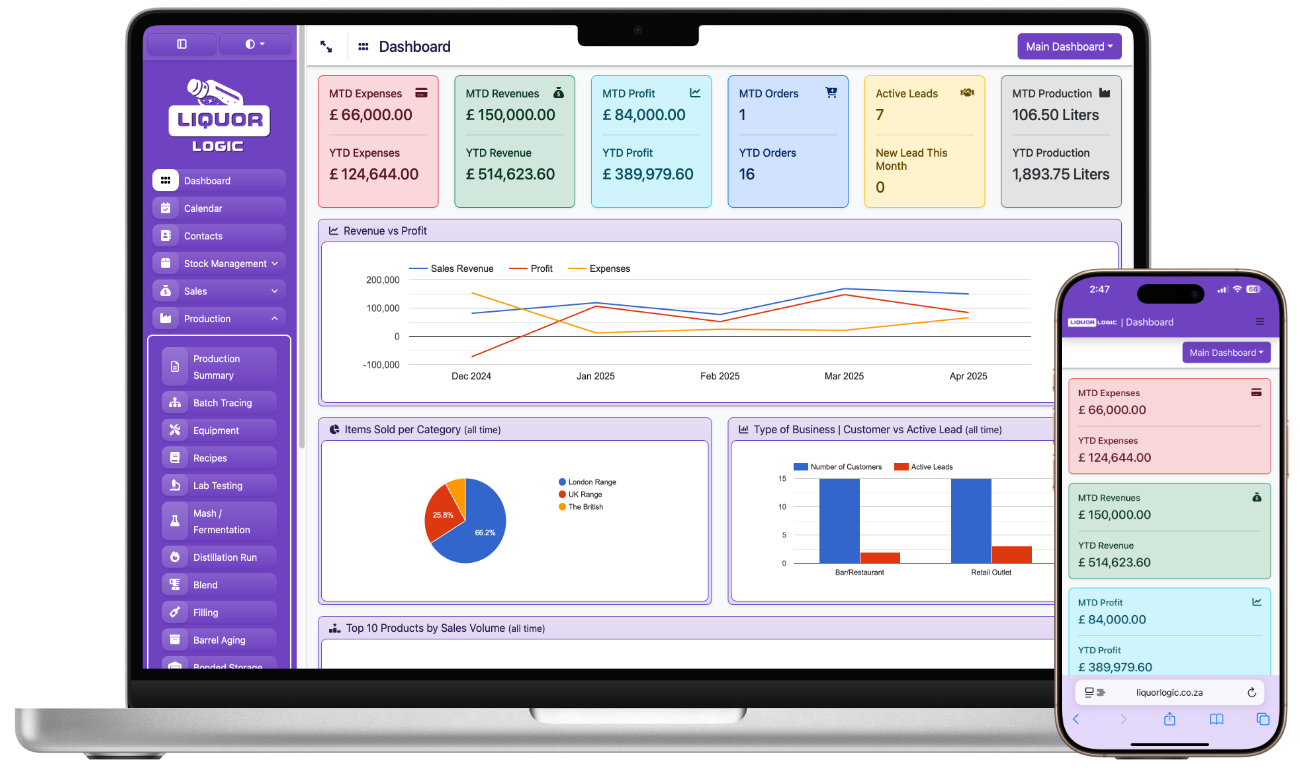Grain to Glass in a Tight Economy: Cost Pressures in 2025

2025 is turning into a perfect storm for alcohol producers: rising raw material prices, supply chain bottlenecks, and inflation-driven pressure on packaging, energy, and distribution. This article looks at how South African and global craft producers are navigating these cost headwinds — and what it means for production planning, pricing, and survival.
Grain to Glass in a Tight Economy: Cost Pressures in 2025
The idea of “grain to glass” captures the magic of craft production — taking raw agricultural inputs and turning them into something refined, marketable, and profitable. But in 2025, every link in that chain is getting squeezed.
Distilleries, breweries, cideries, and wineries are all feeling it: inflation isn’t just in the bottle — it’s in the grain silo, the bottle factory, the truck, and the energy meter. What used to be healthy margin territory is now break-even at best for many small and mid-sized producers.
Raw Material Costs Are Up — And Volatile
Grain prices — especially malted barley, maize, and wheat — have spiked due to global weather instability, fuel price increases, and agricultural input shortages. Even botanicals and fruit for gins, ciders, and wines are more expensive than just a year ago.
Key issues in 2025:
- Barley and wheat volatility: Driven by global supply instability and fertiliser input cost increases.
- Grape pricing inconsistencies: Especially in drought-affected regions of the Western Cape.
- Botanical sourcing issues: For craft gins using niche ingredients (e.g., rooibos, buchu), supply chains are fragile.
Unlike major producers, small operations don’t buy forward at scale or lock in long-term commodity contracts. That leaves many at the mercy of the next shipment’s pricing.
Packaging: The Hidden Cost Creep
Bottles, labels, closures, and cartons have seen consistent cost increases — and those costs hit especially hard for craft producers who order in smaller runs.
Major cost shifts:
- Glass prices: Glass factories face power instability (especially in South Africa), pushing prices up by as much as 18–25% YOY.
- Label materials: Paper and synthetic label stock imports have been delayed or inflated due to port congestion.
- Cartons: Board stock prices are tied to fuel and transport costs, meaning rural producers pay even more.
Some distilleries have shifted to lighter bottles or simplified packaging to control costs — but this creates tension between premium branding and production economics.
Energy Costs: The New Margin Killer
Load shedding, generator fuel, and backup systems aren’t just operational concerns — they’re now line items on the cost of goods sold.
- Diesel reliance: Generators running 4–6 hours a day push up per-batch electricity cost substantially.
- Battery backup capex: Some producers have invested heavily in solar/inverter systems — but the ROI stretches years in the current economic climate.
For producers using electrically powered stills, pumps, or chillers, energy volatility is directly impacting output and consistency.
Logistics and Transport: A Cost Spiral
Getting product to customers — or raw materials into your production site — is now more expensive and less predictable.
Cost drivers include:
- Fuel price surges, especially in long-distance delivery routes
- Cold chain logistics surcharges for sensitive products
- Driver shortages in key wine and spirits regions
- Packaging damage and rework from extended transport time
As a result, more producers are reducing delivery frequency, raising minimum order quantities, or exploring regional consolidation strategies.
Pricing Pressure from the Trade
Distributors, bottle stores, and bars are also feeling the squeeze — which means they push back hard on pricing increases. Many producers are caught between rising costs and flat wholesale price expectations. It's creating a dangerous squeeze on margin.
In some cases, producers are being forced to offer promotional pricing to move stock, even when their production cost has gone up 12–18% over last year.
How Craft Producers Are Fighting Back
1. Smaller, Smarter Batches
Instead of large speculative runs, many producers now plan production based on live sales data and pre-orders. This reduces overstock and capital locked in unsold product — even if it adds complexity to scheduling.
2. Ingredient Flexibility
Breweries are swapping out imported hops for local varieties. Distillers are experimenting with different fermentation techniques or using more abundant fruits and sugars in place of premium inputs. Adaptation is survival.
3. Lean Packaging Strategies
Slimmer bottles, simplified closures, and QR-code-linked digital labeling are becoming popular in place of expensive, multi-layer printed labels.
4. Price Anchoring and Tiering
Some craft brands are introducing “intro” or “value” SKUs alongside their flagship products — offering a lower-cost option without devaluing the main brand.
Planning in a World Without Stability
The biggest shift in 2025? Producers can no longer plan the way they used to. Static forecasts, year-long pricing assumptions, and bulk ordering “just in case” have all given way to agile, short-cycle decisions.
Smart producers now make weekly procurement decisions, monitor every component cost, and track the full cost-per-bottle — not just the recipe. And they’re rethinking how they allocate effort: it’s not about making more. It’s about making what sells, at the right margin, and delivering it with the least risk.
Conclusion: Craft in Crisis — But Still Standing
From grain to glass, nothing is cheap or easy in 2025. But the craft producers that survive — and eventually thrive — are those who’ve embraced the discomfort and reengineered how they think about cost, volume, and pricing.
This year isn’t just a challenge — it’s a forcing function. Forcing producers to know their numbers. To innovate their inputs. And to protect their margins like their business depends on it — because it does.
Back